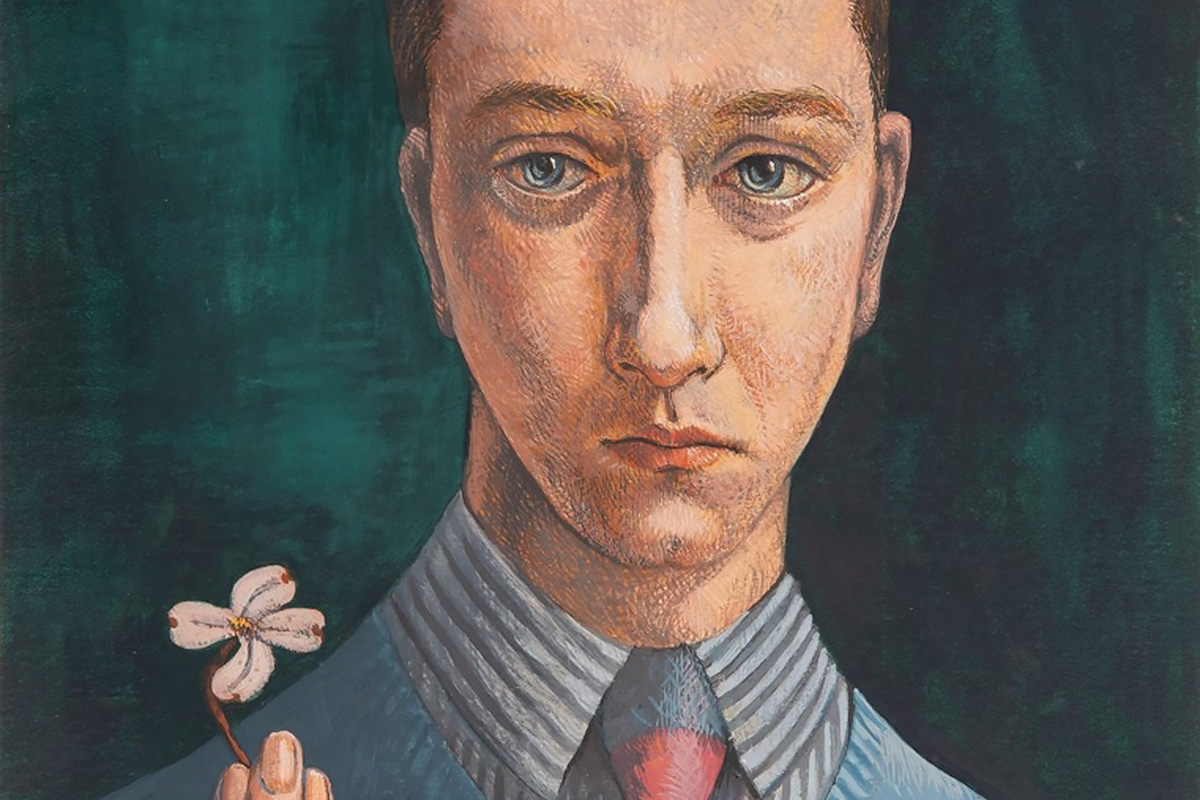Mississippi artist Andrew Bucci’s buoyantly colorful, captivating contemporary art and the place he holds in the state’s creative treasure chest and its cultural history are the focus of Mississippi artistic events celebrating the centennial of his birth.
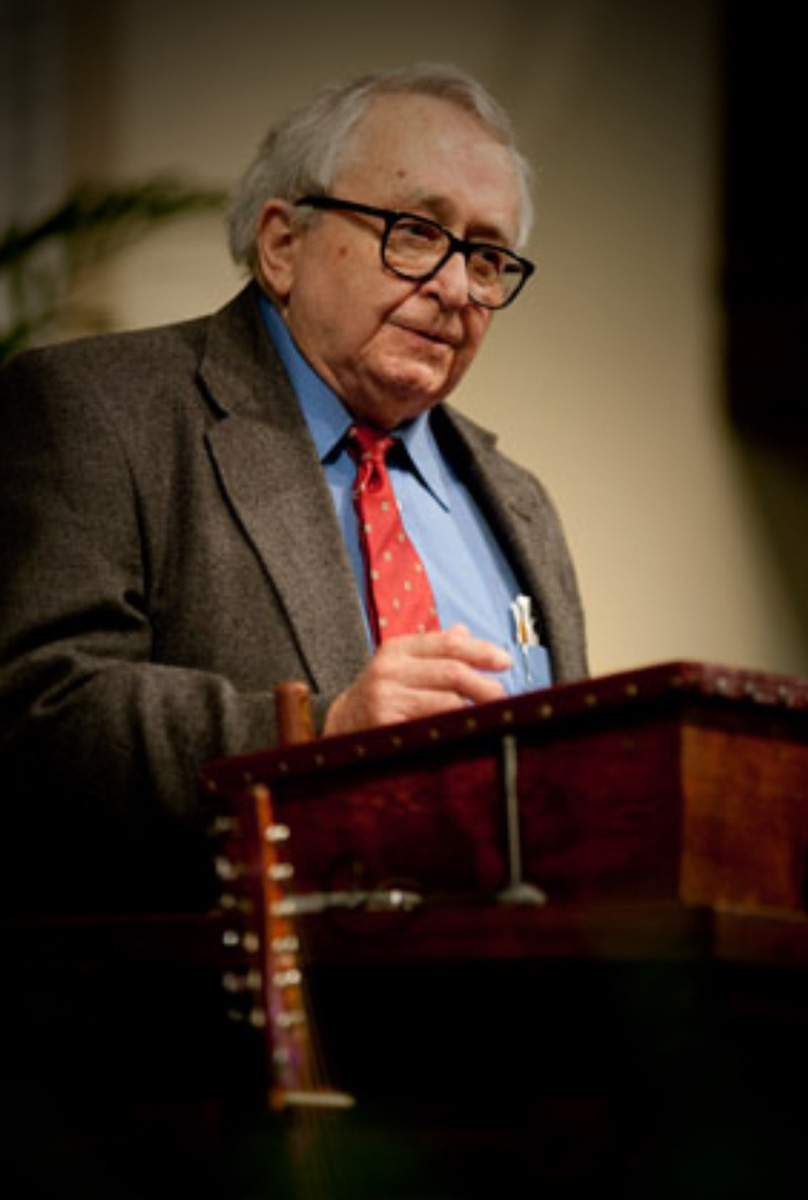
Influential and beloved Mississippi painter Marie Hull pegged Bucci early as one to watch. With words that noted influence from Matisse, but a style all his own, Bucci cultivated a lifelong artistic curiosity and zeal. Hull predicted that her one-time student would become “among the best,” and after Bucci completed his studies at the School of the Art Institute of Chicago, Hull was the one learning from him.
Beyond the obvious appeal of Bucci’s joyful, often bright and colorful art, “What we’re hoping to achieve with this year is to show the depth of his practice and his range—how phenomenal and meticulous he was,” art consultant Elizabeth Abston, who is advising on centennial plans, says.
“On the surface, it seems quick, easy and appealing. But, when you scratch the surface, you see the depth of his practice … and how much he was able to achieve for so many years,” Abston adds.
Bucci was born in Vicksburg on Jan. 12, 1922. The day that would have been his 100th birthday, Jan. 12 of this year, marks the first focus in a yearlong celebration of the late artist’s life and works that Mississipians can expect to see hosted in the state, as coordinated and supported through the Andrew Bucci Estate.
Margaret Bucci, the artist’s niece and executor of his estate, and curator Beth Batton are leading a History Is Lunch program at noon Jan. 12 in the auditorium at the Museum of Mississippi History and Mississippi Civil Rights Museum. Organizers will post a video of the livestream to the Mississippi Department of Archives and History’s YouTube page afterward. Additionally, State Sen. Brigg Hopson of Vicksburg will announce Jan. 12 as Andrew Bucci Day, under the Mississippi Senate’s designation.
After the program, a tour of a small exhibit in the lobby of the neighboring Winter Building introduces the first of several exhibitions planned this year at Mississippi museums and regional art galleries.
“Emerging Grace: Andrew Bucci’s Early Works” at the Winter Building shares sketches from his earliest years, including a landscape from his time studying with Hull, as well as student works from his time studying at the School of the Art Institute of Chicago.
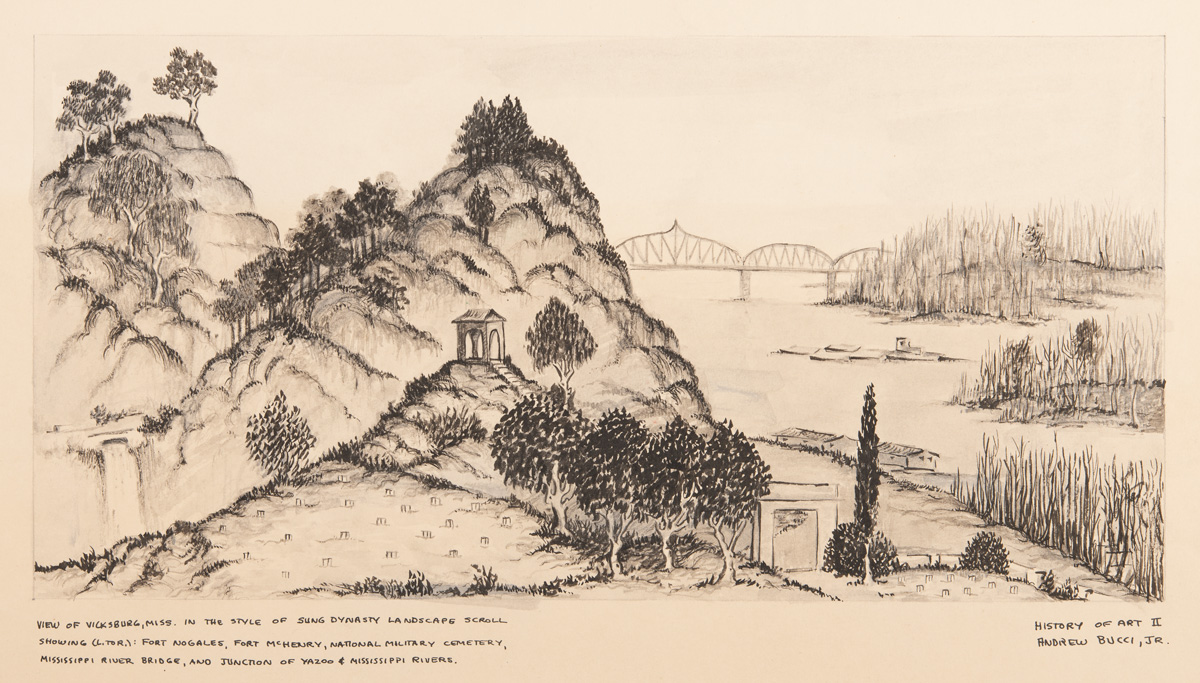
Different styles show up in his sketchbooks, and curator Batton focused on imagery offering a glimpse at the development of his artistic vocabulary. “This language that’s very graceful, and that you see in later works in those loose brushstrokes and abstract works, with images in the background that look like falling leaves, and loose, graceful figures (is reminiscent of) Chinese calligraphy,” Batton says.
“There’s a wonderful landscape of Vicksburg that he did in the Sung Dynasty style, and there is a description near the artwork that’ll be displayed from his notes,” Batton adds. “He talks about the character of the subject being represented, as well as how it looks.”
“It’s going to be more of an intimate look at some of his early student work, none of which has ever been seen before by the public,” Margaret Bucci says.
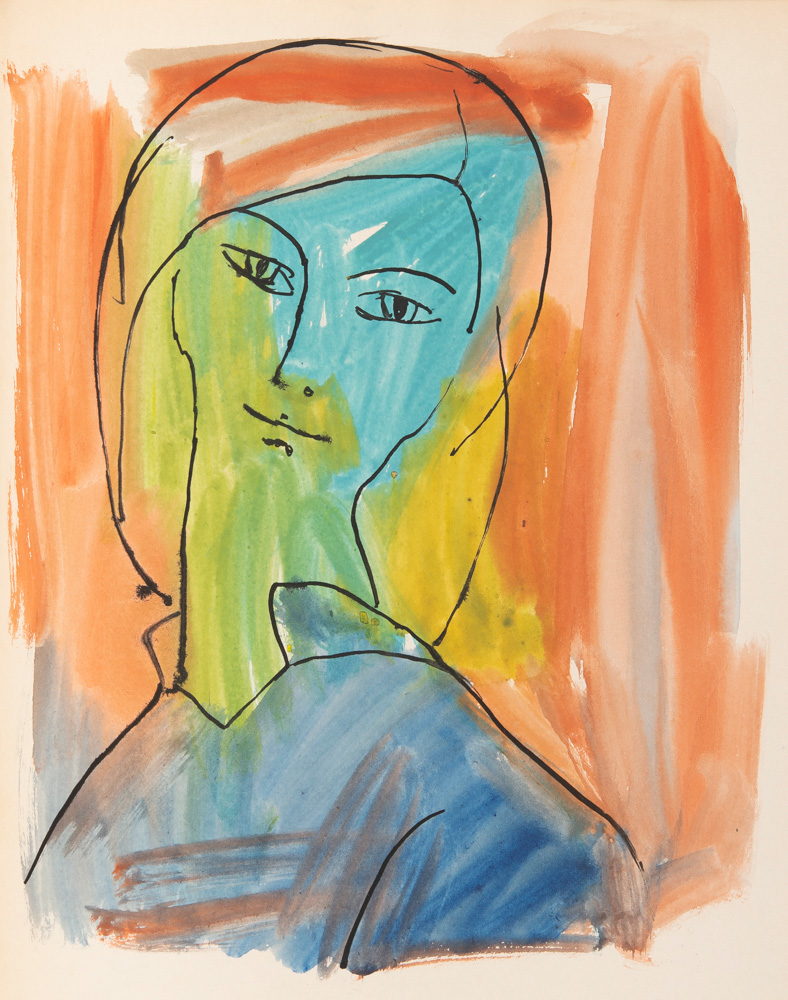
In addition to earning a degree in architectural engineering from Louisiana State University, Bucci took life-drawing classes at Académie Julian in Paris while stationed nearby after World War II. He also received his bachelor’s and master’s degrees of fine arts from the School of the Art Institute of Chicago, and he studied fashion illustration at Parsons School of Design in New York City.
“A lot of his early work shows his early interest in figure drawing, and figure painting. These sketchbooks are filled with people,” Margaret Bucci says. “He loved drawing the human figure, and he loved fashion and theatricality, and that kind of drama that he could add to his art.”
The theme surfaced as early as the 1930s, in high-school drawings. “He kept a lot of those drawings, and they are theatrical and fashion figures,” Margaret Bucci describes. “You could tell, when he went to art school, his sophistication with color was starting to come to the fore,” as did his interest in abstraction, she notes.
Additional materials touch on Bucci’s military service in World War II, his training as a meteorologist, art school studies on the G.I. Bill at Hull’s encouragement and more.
Artifacts in “Emerging Grace” are part of the Andrew Bucci Collection, which the Andrew Bucci Estate donated to the Mississippi Department of Archives and History in January 2021. The trove of materials—87 boxes in all—is rich in biography and historical context as well as art, including Bucci’s detailed personal scrapbooks from the 1940s into the 2000s and nearly 100 sketchbooks of artwork.
“We have no other collection that has this amount of artistic coursework and prolific sketching,” Laura Heller, MDAH archivist, says while cataloguing the collection.
“He painted in them, he drew in them, he did wax resist. … He was doing everything in his sketchbooks,” Margaret Bucci says. “They are filled with all sorts of delights.
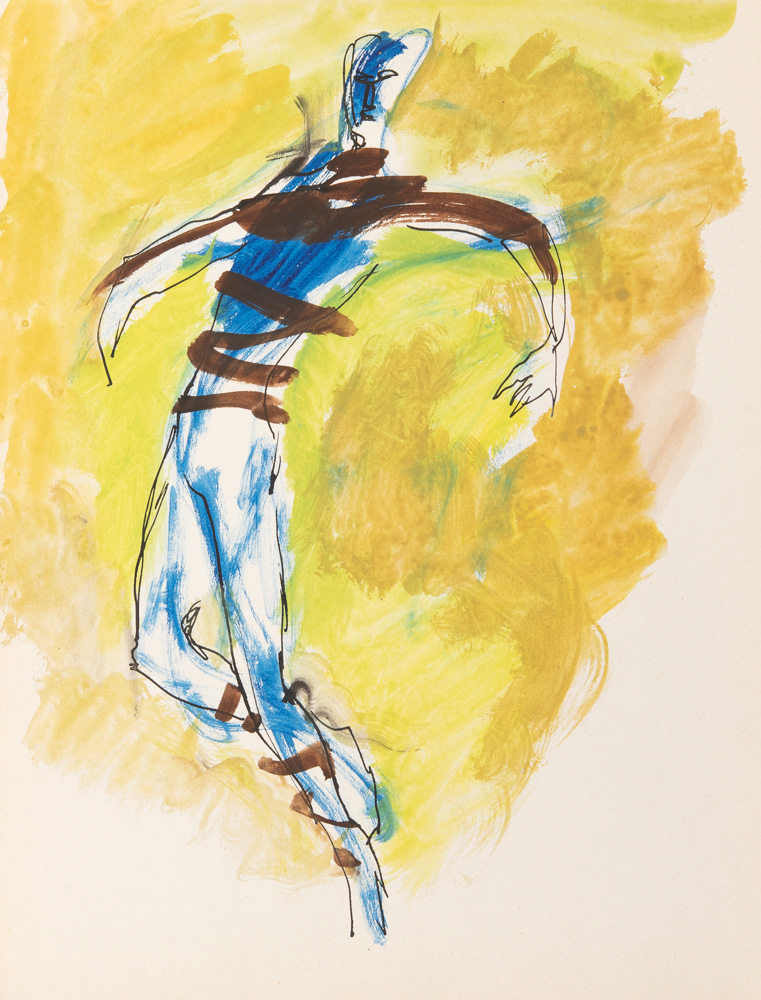
“His things belonged in Mississippi,” where he got his start and acquired his biggest fan base, she says. Much of the artwork is from a formative time in his career.
“I just felt like the public needed access to it, for scholarly purposes, for research purposes. This whole body of work is kind of a treasure chest for anyone interested in not only studying Andrew, but if you get to know Andrew’s story, you also get to learn the story of a lot of other Mississippi artists.”
Tributes across the State
Exhibits later this year highlight key threads in Bucci’s art. “He was always finding new ways to express his vision,” Margaret Bucci says.
“Andrew Bucci: Fashion Forward,” which will be open from Aug. 26 to Oct. 31 at the Lauren Rogers Museum of Art in Laurel, Miss., will explore his art of the clothed figure. The exhibit will feature sketches made at the Académie Julian when Bucci was stationed near Paris as a military meteorologist, alongside class projects and notebooks from his fashion illustration classes as Parsons in 1951 and figure drawings from the 1960s.
“We think this is the first time his fashion work has really been the focus,” Kristen Zohn, curator of collections and exhibitions at the Lauren Rogers Museum of Art, says.
A show at the Walter Anderson Museum of Art in Ocean Springs, Miss., will be held from October 2022 through March 2023, and will zero in on Bucci’s use of color and the abstraction of the landscape.
“We’re going to be making ties between him and Walter Anderson and their appreciation of the Southern landscape,” Mattie Codling, the museum’s director of collections and exhibitions, says.
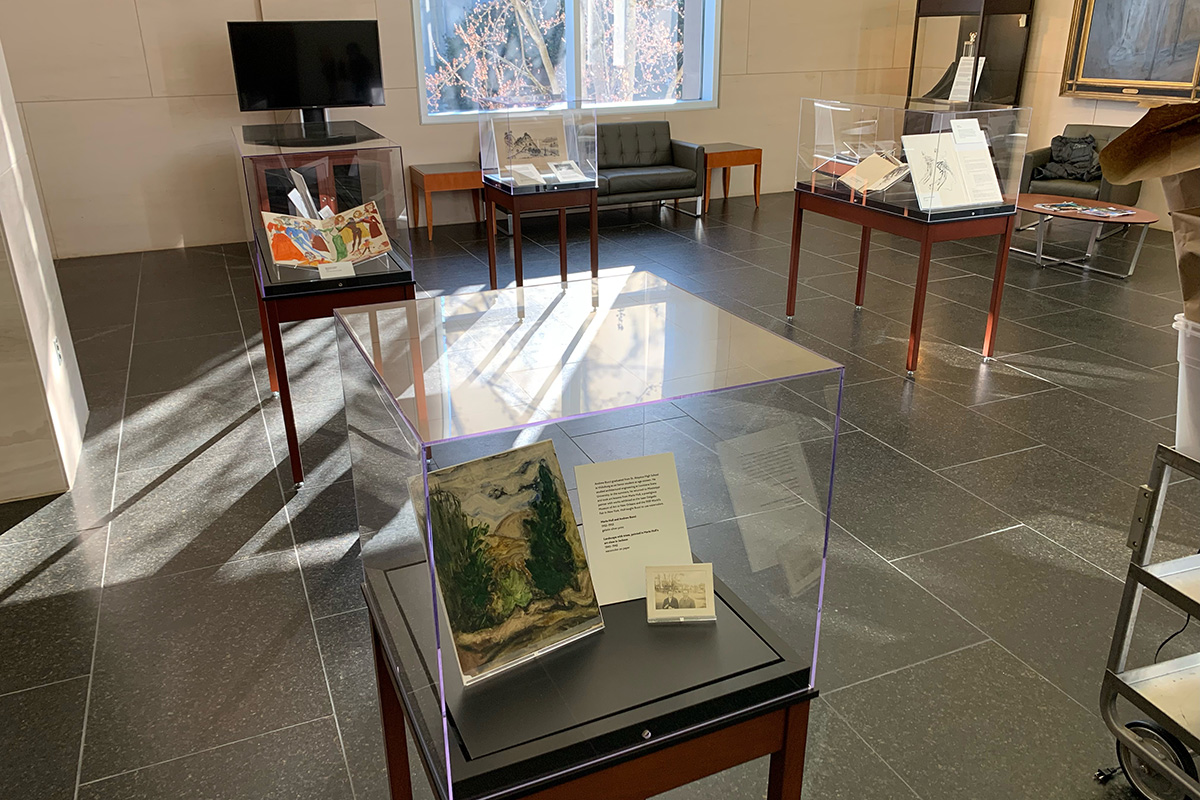
A Vicksburg Art Association exhibition planned for September will feature cityscapes of places in which Bucci lived and studied, including Vicksburg, New York City, Washington, D.C., and Chicago.
Commercial galleries such as Brown’s Fine Art in Jackson, Cole Pratt Gallery in New Orleans and Blue Print Gallery in Dallas also plan to mark the artist’s centennial in some way this year, with details to be announced in the near future.
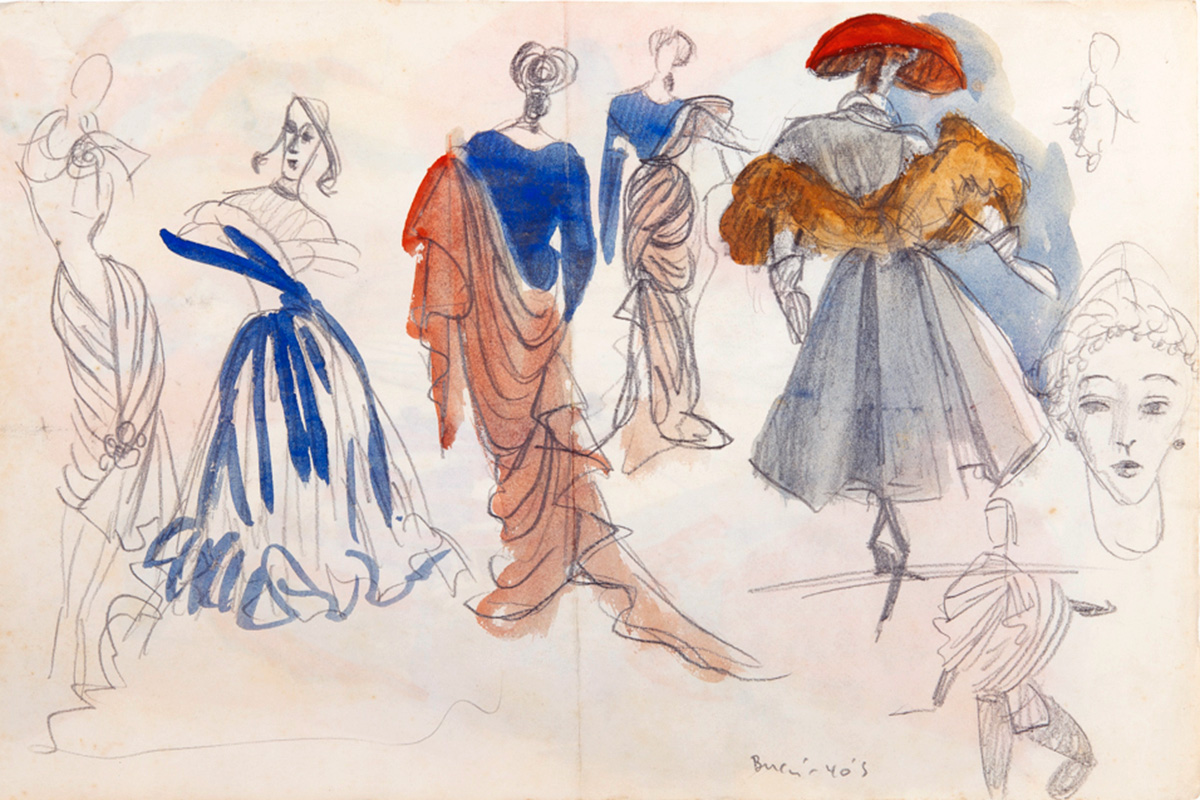
These centennial tributes aim to showcase the range of an artist who started creating in the mid-to-late 1930s and continued through the 2000s, learning something new every decade—always evolving, always creating.
“He really is one of Mississippi’s most important 20th-century artists,” Abston says.
The History Is Lunch program on Jan. 12 is free and open to the public; it will be livestreamed as well on the Mississippi Department of Archives and History’s Facebook page, and posted on the department’s YouTube channel. The “Emerging Grace” exhibit runs through March 12 at the Winter Building and is open to the public on Monday from 9 a.m. to 5 p.m.; Tuesday through Friday from 8 a.m. to 5 p.m.; and Saturday from 8 a.m. to 1 p.m.

